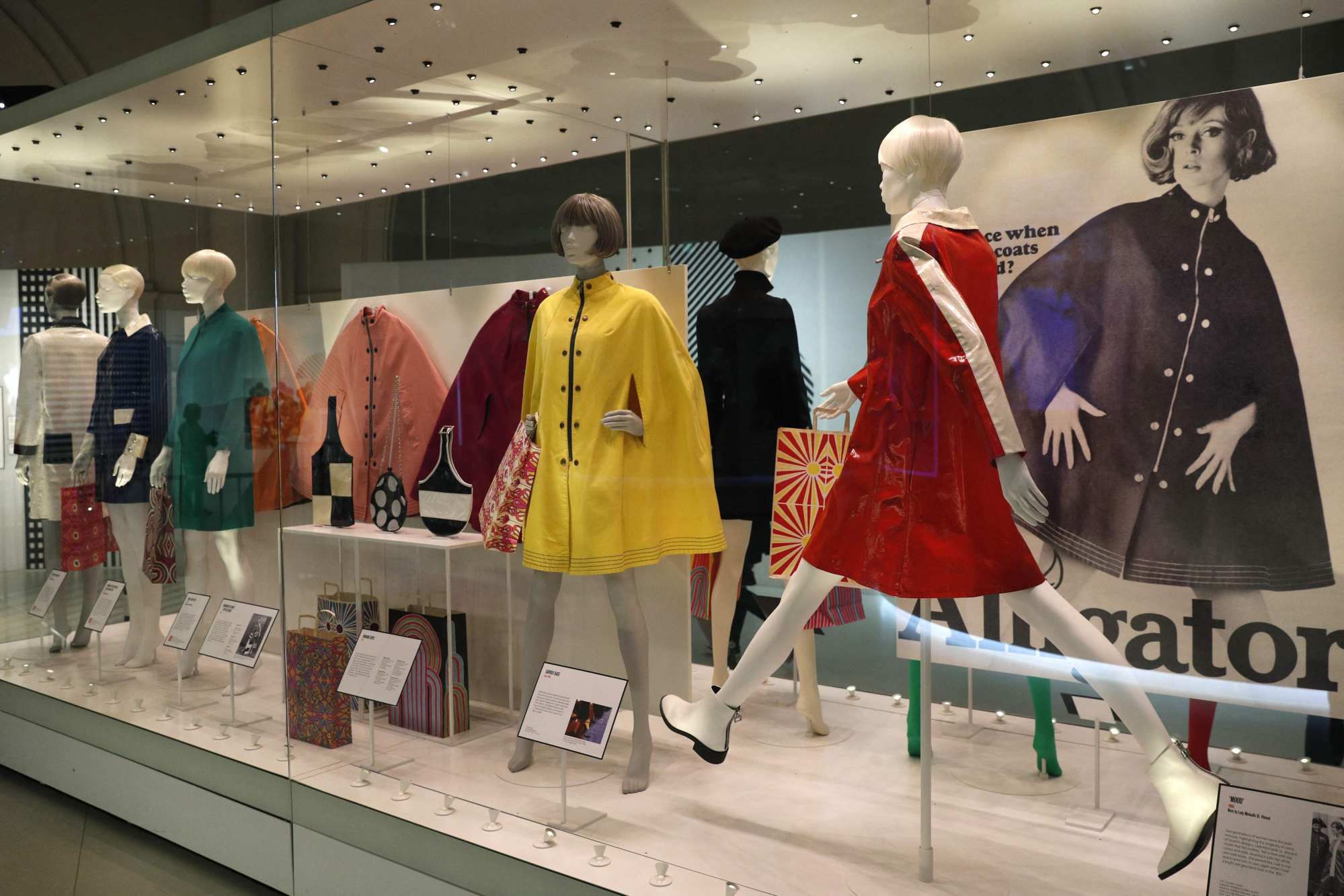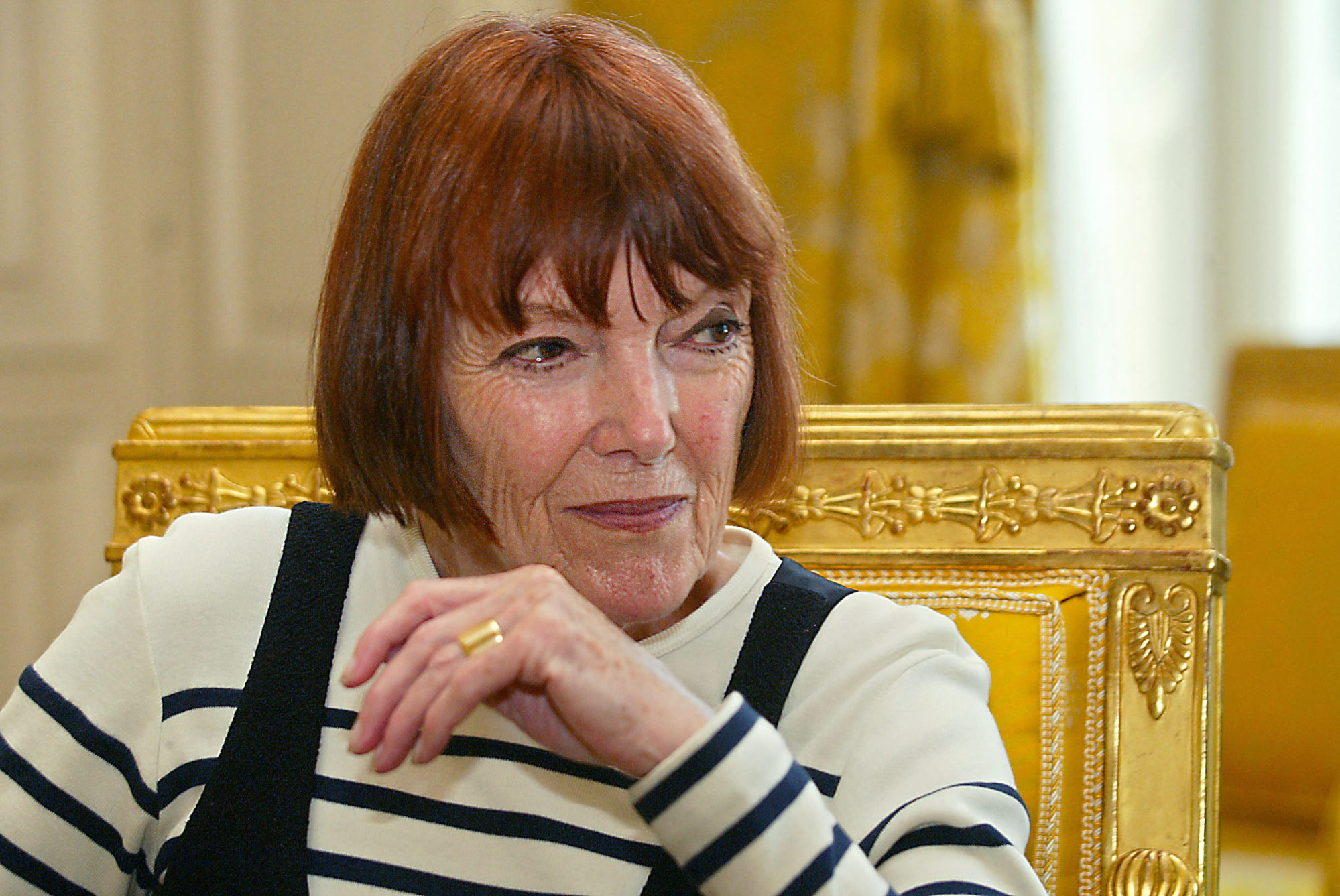
Miniskirt, hot pants ‘inventor’ and Swinging Sixties icon Mary Quant dies at 93
- The UK designer shot to the top of the fashion scene at the time when the Beatles and Rolling Stones dominated the music world
- She helped popularise the miniskirt – some credit her with inventing it – and the innovative colourful tights that went along with it
Mary Quant, the visionary fashion designer whose colourful, sexy miniskirts epitomised Swinging London in the 1960s and influenced youth culture around the world, has died. She was 93.
Quant’s family said she died “peacefully at home” in Surrey, southern England, on Thursday.
Quant helped popularise the miniskirt – some credit her with inventing it – and the innovative tights that went along with it, creating dresses and accessories that were an integral part of the look. She created mix-and-match, simple garments that had an element of whimsy. Some compared her impact on the fashion world to the Beatles’ impact on pop music.
“I think it was a happy confluence of events, which is really what fashion is so often all about”, said Hamish Bowles, international editor at large for American Vogue magazine. “She was the right person with the right sensibility in the right place at the right time. She appeared on the scene at the exact cusp of the ’60s”.
He said Quant was also an astute businesswoman who was one of the first to understand how branding oneself as a creative force could help her sustain her business and branch out into new fields, like cosmetics.

Quant was perfectly positioned to capitalise on the “youthquake” that took hold in the 1960s. She sensed that the days of the exclusive salons were numbered, and thought that even the great Parisian designers would follow ready-to-wear trends.
The look she created was sexy and fun, a sharp break with the predictable floral day dresses commonly worn after the war, when food rationing was still in place and tight household budgets meant there was little disposable income.
Quant introduced miniskirts with hemlines up to eight inches above the knee to the London scene in 1966 and they were an instant hit with young people, in part because they shocked and offended many.
Some insist she first developed the style, but many also credit French designer Andre Courreges, whose 1964 spring collection included minidresses that were popular in Paris but did not have widespread impact outside France. Others cite the short skirts worn by actress Anne Francis in the 1956 film Forbidden Planet as the first example of the miniskirt.
My time with Mary Quant, the designer who defined ’60s style
Whether she was the first to design them, there is no doubt that it was Quant who figured out how to market the miniskirt to the masses.
While Courreges came from an haute couture tradition and his clothes were expensive items aimed at a limited audience, Quant used a variety of materials and colours to make miniskirts popular with young women on a limited budget.
She shot to the top of the fashion scene at the time when the Beatles and Rolling Stones dominated the music world, and she was forever linked to the heady freedoms of those days.
“Change was in the air”, said Sonnet Stanfill, fashion curator at London’s Victoria and Albert Museum, which displays some of Quant’s work. “She identified the youthful market. And she had an unerring sense of what her customers wanted to wear. After the war, there was this need for an alternative for younger women, and she absolutely provided that”.
The clothes became wildly popular and were worn by models like Twiggy and Pattie Boyd, who was then married to Beatles guitarist George Harrison.
Asked by the Guardian newspaper in 1967 if her clothes could be considered “vulgar” because they were so revealing, Quant replied that she loved vulgarity and embraced it.
“Good taste is death, vulgarity is life,” she said, adding that the provocative poses of her models reflected the new sexual openness of the times, which was fuelled by the development of the birth control pill. She said the availability of contraceptive pills made it possible for women to enjoy sex and decide for themselves whether to conceive.

With the help of her wealthy husband and business partner, Alexander Plunket Greene, and the accountant Archie McNair, she opened Bazaar in Chelsea in 1955, at first relying on innovative window displays to bring in younger customers.
“Snobbery has gone out of fashion, and in our shops you will find duchesses jostling with typists to buy the same dress”, Quant once said. She called the shop “a sophisticated candy store for grown-ups”.
Bazaar became a focal point for the young and the beautiful and those who wanted to rub shoulders with them, and her presence there helped make the neighbourhood a favoured destination. Small restaurants, bistros and pubs all flourished and other boutiques opened, giving Chelsea’s King’s Road the feel of a perpetual party.
The shop was such a success that she soon moved into other parts of London and began exporting her clothes to the United States, where the “British invasion” was in full swing.
She was unusual in that she often modelled her own clothes, appearing lovely and naturally confident in her own fashions, usually with her hair styled in a distinctive, angular bob by hairdresser Vidal Sassoon.

She soon diversified her interests, developing a popular make-up line and also moving into kitchenware and household accessories. The make-up proved extremely profitable, particularly in Japan, where Quant retained a devoted following.
She was also credited with introducing hot pants and micro-minis to the fashion scene in the late 1960s.
She was made an Officer of the British Empire for service to the fashion industry in 1966, wearing a trademark miniskirt when she received the honour at Buckingham Palace.
Quant stepped down from the day-to-day management of her firm, Mary Quant Ltd, in 2000 after it was bought by a Japanese company, but kept working as a consultant.
The firm continued to use the daisy motif and logo that Quant pioneered in the 1960s, and it maintained one shop in London in addition to roughly 200 shops in Japan.

